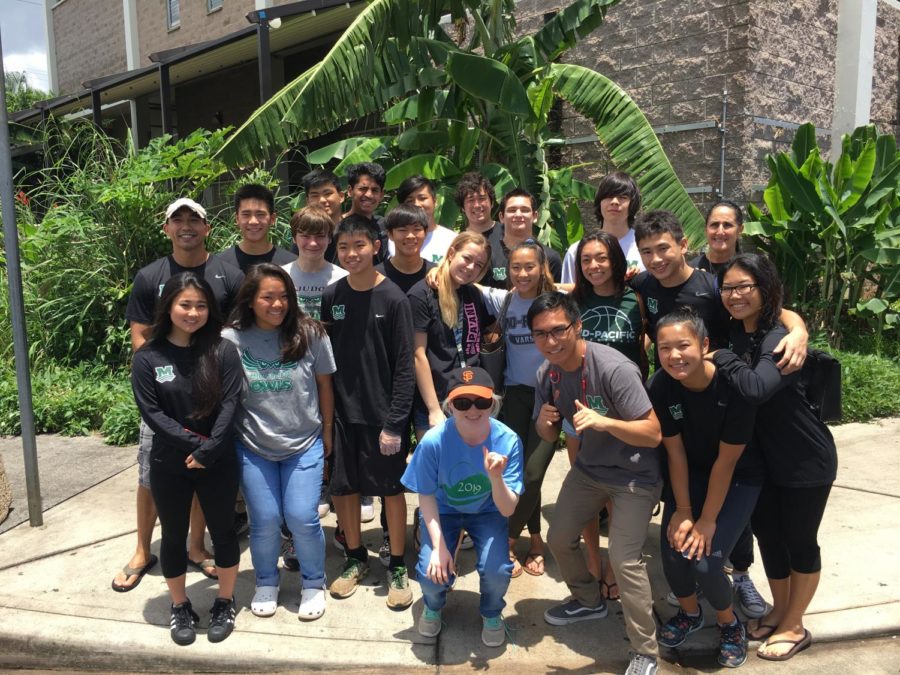By Josephine Brewer
Staff Writer
In 2003, high school science teacher and judo instructor, Michael Valentine, spent about four months in San Francisco without a home.
Although becoming homeless was not in his plans, he uses his life experience to introduce students to be a part of the solution to a statewide problem.
“That’s what I teach in class, everything I never heard when I was in high school, all the little mistakes,” Valentine said.
According to 2020 census data, 14% of homes in Hawai’i are vacant. On Oahu alone that number drops to 9.2%.
Even with so many empty homes, many remain without one.
Hawaii, which used to be the leading state with the biggest homeless population is now second, with 15,000 homeless individuals and about 2,000 chronically homeless. Chronically homeless meaning having been homeless for at least a year or repeatedly.
Being homeless in Hawaii can be a very different experience than being homeless in other states.
“You can be outside all the time. It’s not that bad. Compared to New York, where you’re freezing, where you can die,” Valentine said.
A top earner at Circuit City, Valentine was let go when they stopped doing commission sales. He would stay with friends for a few days under the notion that something was wrong with his house.
“I pretended that ‘oh, I need a place to stay for a few days’ and I would go to somebody else’s house and somebody else’s house,” he said.
Living without shelter is more than not having a roof overhead. Finding a place to stay and a reliable, safe environment comes with many dangers.
“Women, you know, very often are either raped or beaten out there. And the children, they don’t really have any way to protect them. So they (the women and childrens’ shelter) produce it just for them,” Valentine said.
There aren’t solely issues with people becoming homeless. There’s also issues with how people get out of their situation, danger in shelters, and fear of becoming homeless again.
“It’s a bigger systemic issue than just being homeless,” Valentine said.
Mid-Pacific offered some opportunities in the past to learn about homelessness and ways students can help. One is volunteering at shelters.
In 2017, Valentine took judo students to the women and children’s shelter to learn about life in the shelter and how they could help. The excursion was organized by a judo student’s parent.
“We get a donor to help give food, and we hand it out, but more so to educate the kids and explain to them how the shelter works, what it looks like, how does it do it?” Valentine said.
Sophomore Emma-Lani Brown volunteers with her family at Keauhou Shelter, connected to Next Step Shelter.
“I’m helping my family. I also like helping people in need,” Brown said.
Brown said homelessness is an issue everyone should care about. But it can be difficult to help at times.
Valentine said sometimes people will refuse help.
“Usually, like during Thanksgiving and all that, I will try to bring them food or whatever like that. But I remember one year we did that, they threw food back at us, and they wanted money,” Valentine said.
Drug addiction is one reason people find themselves living on the streets and what it means to help can be difficult to gauge.
“It opens up this whole philosophical argument, right? We got to help everybody. But if you don’t want to be helped, how do I help you? And what do they mean by help? Has it helped them: money to buy drugs or money for help?” Valentine said.
Sometimes it can even be dangerous to help. There are cases of civilians being attacked by the homeless, which can make some people hesitant to help.
Institute for Human Services single women and families’ shelter guest service worker, Kaya Langi, says you can’t help everyone the same way.
“A lot of people have different things they’re balancing. People end up homeless for all different reasons. We have to evaluate your situation first to be able to help,” Langi said.
Although 2017 was the only year Mid-Pacific took students to the women and children’s shelter, there are other ways the school is teaching students about homelessness in Hawaii.
Eighth grade students recently worked on building a dome, as domes are being used to house the homeless on the grounds of a church in Kaneohe.
Community service projects can turn to personal enrichment when students hear stories from their teachers, like that of Valentine’s.
“I signed up for unemployment, I signed up for welfare, I signed up for everything, but I paid it all back, that was one of the things I wanted to do,” Valentine said.
Valentine helps pay it back by teaching his students to learn from his past and help them with their future.
“That’s what I’ve run in my class. I use my homelessness, my troubles as examples,” Valentine said.
Although it can be awful reaching for someone to reach lowest points and hard to recover, figuring out how to pick up the pieces can be an insightful experience.
“Sometimes you have to hit rock bottom, so you know how to get back up. And then, that’s where you really figure out who you are,” Valentine said.
This story was originally published on Na Pueo on May 19, 2022.




































